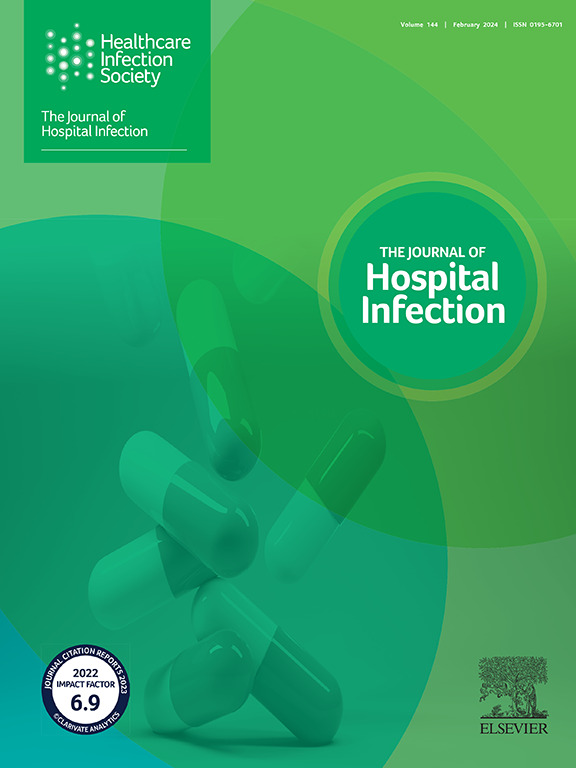反概率加权法可更准确地估算重症监护室医护相关感染的发病率,这是两个国家监测系统得出的结果。
IF 3.9
3区 医学
Q1 INFECTIOUS DISEASES
引用次数: 0
摘要
背景:监测医疗相关感染(HAIs)主要采用两种方法:纵向监测(可测量发病率)和点流行率调查(PPS)。点流行率调查耗时较少,但受长度偏差采样的影响,可通过反概率加权法加以纠正。我们通过分析意大利两个国家监测系统的数据,评估了这种方法的准确性:通过前瞻性监控系统(GiViTI)测得的呼吸机相关肺炎(VAP)和中心管路相关血流感染(CLABSI)发病率与通过 PPS 测得的重症监护病房(ICU)中相同 HAIs 的粗略和反概率加权流行率换算得出的发病率估计值进行了比较。加权患病率是根据所有患者的风险时间按反比例加权得出的。使用改编版的 Rhame 和 Sudderth 公式将流行率转换为每 100 例住院的发病率:总共纳入了 30988 名通过 GiViTI 监测的患者和 1435 名通过 PPS 监测的患者。根据粗略 VAP 和 CLABSI 感染率估算的发病率与通过 GiViTI 测定的发病率之间存在明显差异(相对风险,RR 分别为 2.5 和 3.36;95% 置信区间,CI 分别为 1.42 - 4.39 和 1.33 - 8.53,p = 0.006 和 0.05)。相反,根据加权 VAP 和 CLABSI 感染率估算的发病率与通过 GiViTI 测量的发病率之间没有发现明显差异(p = 0.927 和 0.503):结论:在前瞻性监测不可行的情况下,我们的简单方法可用于从 PPS 数据中获得更准确的发病率。本文章由计算机程序翻译,如有差异,请以英文原文为准。
Inverse probability weighting leads to more accurate incidence estimates for healthcare-associated infections in intensive care units – results from two national surveillance systems
Background
Two main approaches are employed to monitor healthcare-associated infections (HAIs): longitudinal surveillance, which allows the measurement of incidence rates, and point prevalence surveys (PPSs). PPSs are less time-consuming; however, they are affected by length-biased sampling, which can be corrected through inverse probability weighting. We assessed the accuracy of this method by analysing data from two Italian national surveillance systems.
Methods
Ventilator-associated pneumonia (VAP) and central-line-associated bloodstream infection (CLABSI) incidence measured through a prospective surveillance system (GiViTI) was compared with incidence estimates obtained through conversion of crude and inverse probability weighted prevalence of the same HAIs in intensive care units (ICUs) measured through a PPS. Weighted prevalence rates were obtained after weighting all patients inversely proportional to their time-at-risk. Prevalence rates were converted into incidence per 100 admissions using an adapted version of the Rhame and Sudderth formula.
Findings
Overall, 30,988 patients monitored through GiViTI, and 1435 patients monitored through the PPS were included. A significant difference was found between incidence rates estimated based on crude VAP and CLABSI prevalence and measured through GiViTI (relative risk 2.5 and 3.36; 95% confidence interval 1.42–4.39 and 1.33–8.53, P=0.006 and 0.05, respectively). Conversely, no significant difference was found between incidence rates estimated based on weighted VAP and CLABSI prevalence and measured through GiViTI (P=0.927 and 0.503, respectively).
Conclusions
When prospective surveillance is not feasible, our simple method could be useful to obtain more accurate incidence rates from PPS data.
求助全文
通过发布文献求助,成功后即可免费获取论文全文。
去求助
来源期刊

Journal of Hospital Infection
医学-传染病学
CiteScore
12.70
自引率
5.80%
发文量
271
审稿时长
19 days
期刊介绍:
The Journal of Hospital Infection is the editorially independent scientific publication of the Healthcare Infection Society. The aim of the Journal is to publish high quality research and information relating to infection prevention and control that is relevant to an international audience.
The Journal welcomes submissions that relate to all aspects of infection prevention and control in healthcare settings. This includes submissions that:
provide new insight into the epidemiology, surveillance, or prevention and control of healthcare-associated infections and antimicrobial resistance in healthcare settings;
provide new insight into cleaning, disinfection and decontamination;
provide new insight into the design of healthcare premises;
describe novel aspects of outbreaks of infection;
throw light on techniques for effective antimicrobial stewardship;
describe novel techniques (laboratory-based or point of care) for the detection of infection or antimicrobial resistance in the healthcare setting, particularly if these can be used to facilitate infection prevention and control;
improve understanding of the motivations of safe healthcare behaviour, or describe techniques for achieving behavioural and cultural change;
improve understanding of the use of IT systems in infection surveillance and prevention and control.
 求助内容:
求助内容: 应助结果提醒方式:
应助结果提醒方式:


